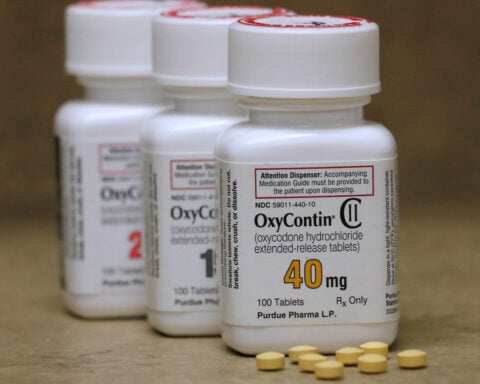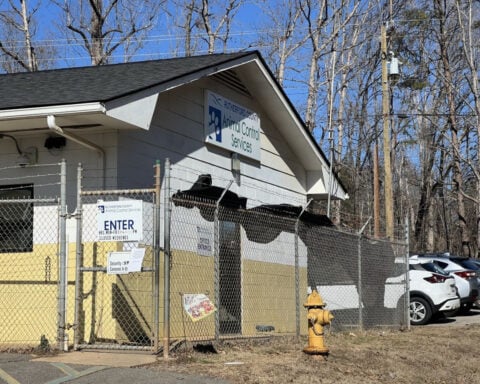While commonly used interchangeably, "anxiety attack" and "panic attack" refer to distinct conditions, each with significant differences. Learning to identify each can help assess when professional treatment may be needed. While both create distress, their causes, onset, severity and duration vary. Recognizing the divergence equips individuals to better manage symptoms.
Unlike panic attacks, anxiety attacks have no formal clinical definition. The presence of those conditions is not explicitly recognized in the Diagnostic and Statistical Manual of Mental Disorders (DSM-5). However, the DSM-5 defines anxiety as a feature of disorders like generalized anxiety, social anxiety, PTSD and more. Anxiety often relates to worrying about potential stressors. It may gradually build in response to a known trigger. Common symptoms include fear, unease, dread and distracted thoughts. The ambiguous nature of "anxiety attack" leads to diffuse meanings, with individuals describing different experiences.
Panic attacks, however, consist of abrupt and severe dread that is often unrelated to external triggers. Physical reactions like a racing heart and dizziness accompany the abrupt terror. The DSM-5 categorizes them as expected or unexpected, with the latter striking without warning. Recurrent unexpected attacks may indicate panic disorder.
Both anxiety and panic attacks share many emotional and physical symptoms, complicating efforts at distinction. But key variances help differentiate the two:
- Cause - Anxiety frequently links to a specific stressor; panic can occur randomly.
- Speed of Onset - Anxiety progresses gradually; panic appears quickly.
- Severity - Anxiety manifests along a spectrum; panic often involves urgent, disruptive symptoms.
- Effect - Panic can spur fear of reoccurrence and avoidance behaviors.
Essentially, panic attacks represent anxiety symptoms at their most severe. The line between the two depends on individual experiences.
Anxiety commonly associates with sources of stress, whether a looming work presentation, family conflict or chronic health issue. Similarly, expected panic attacks tie to external triggers like phobias. Both also share risk factors that increase susceptibility.
Personal history of trauma or significant life stressors can predispose individuals to anxiety and panic. Ongoing anxiety may then escalate into full panic attacks for some. Genetics likely play a role, with family history correlating to higher risk. Environmental factors like substance use and withdrawal may also contribute.
Those already coping with anxiety or panic disorders remain vulnerable to relapses triggered by situations that prompt fear and unease. Understanding these individual risk factors aids awareness and prevention.
Since anxiety attacks are not a defined condition, clinicians cannot formally diagnose them. However, doctors can assess for anxiety and related disorders through:
- Patient history to identify symptoms and onset
- Physical exam to rule out conditions like heart disease
- Lab tests for any underlying illness
- Psychological evaluations utilizing validated anxiety measurement tools
Once other causes are eliminated, a physician may diagnose a specific anxiety disorder based on DSM-5 criteria. This assessment can clarify treatment paths, providing relief.
Panic attacks can be diagnosed, but recurrences signal a potential panic disorder requiring confirmation. Doctors again rule out physical conditions before evaluating symptoms against DSM-5 standards. Pinpointing panic disorder allows therapies that address root causes, helping curb attacks.
Whether experiencing anxiety or panic, multiple treatment routes exist. Psychological counseling builds coping strategies, cognitively reframes anxiety triggers, and lessens the power of panic symptoms through exposure techniques. Talk therapy provides lasting tools for wrestling fears and preventing escalation into panic.
Medications like SSRIs and sedatives may be prescribed alongside counseling. Drugs help stabilize mood and minimize anxiety in the short term, while therapy pursues core change. Integrative treatment allows medicine to provide urgent relief until counseling starts rewiring thought patterns.
Lifestyle adjustments also help, including stress management, exercise, balanced nutrition, mindfulness practices and limiting substances. Self-care enhances resilience, providing foundations for therapeutic gains. Mind-body practices like meditation and yoga are clinically validated for anxiety relief as well.
No singular approach works for everyone, but combining clinical care, lifestyle adaptation and self-help techniques brings cumulative benefits. Patience is vital, as progress requires persistence. But long-term well-being is worth the journey.
When anxiety or panic episodes strike despite preventive efforts, individuals can employ self-care practices to endure the temporary distress. Simple but powerful options include:
- Deep breathing - Slow, measured inhalations and exhalations.
- Grounding strategies - Observing surroundings to stay present.
- Soothing activities - Anything personally relaxing like music or scents.
- Affirmations - Reminding oneself the feelings will pass.
- Movement - Light exercise to release tension.
- Acceptance - Acknowledging rather than fighting symptoms.
Well-practiced coping mechanisms temper the intensity when anxiety arises or panic hits. Remaining flexible and patient with oneself also helps weather the storm.
Panic and anxiety may always remain vulnerabilities, given certain triggers. But comprehensive treatment and self-care significantly empowers individuals to enjoy life on their own terms. Recognizing the distinction between anxiety and panic episodes is the crucial initial stage.

 Police want to talk to man after gun was accidentally fired gun inside Walmart bathroom
Police want to talk to man after gun was accidentally fired gun inside Walmart bathroom
 Woman arrested for what was found in 'colorful party bag' during traffic stop, deputies say
Woman arrested for what was found in 'colorful party bag' during traffic stop, deputies say
 Device helps police detect drugs safely
Device helps police detect drugs safely
 Fact check: Trump makes false claims about trade with Canada and Europe in remarks to Davos
Fact check: Trump makes false claims about trade with Canada and Europe in remarks to Davos
 Prince Harry claims court victories. But is he winning the larger war with the British media?
Prince Harry claims court victories. But is he winning the larger war with the British media?
 Judge blocks Trump’s ‘blatantly unconstitutional’ executive order that aims to end birthright citizenship
Judge blocks Trump’s ‘blatantly unconstitutional’ executive order that aims to end birthright citizenship
 Made in Maine: Kittery company using kelp to help keep skin hydrated
Made in Maine: Kittery company using kelp to help keep skin hydrated
 Karla Sofía Gascón makes history with ‘Emilia Pérez’ Oscar nomination
Karla Sofía Gascón makes history with ‘Emilia Pérez’ Oscar nomination
 ‘Offensive’ tattoos and ‘see-through clothing’ can get you kicked off your next Spirit Airlines flight
‘Offensive’ tattoos and ‘see-through clothing’ can get you kicked off your next Spirit Airlines flight
 Ariana Grande pays homage to her ‘Oz’ roots with emotional Oscar nomination reaction
Ariana Grande pays homage to her ‘Oz’ roots with emotional Oscar nomination reaction
 Panic Attack
Panic Attack







